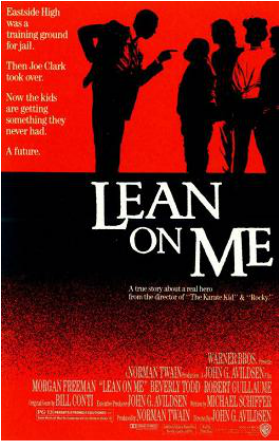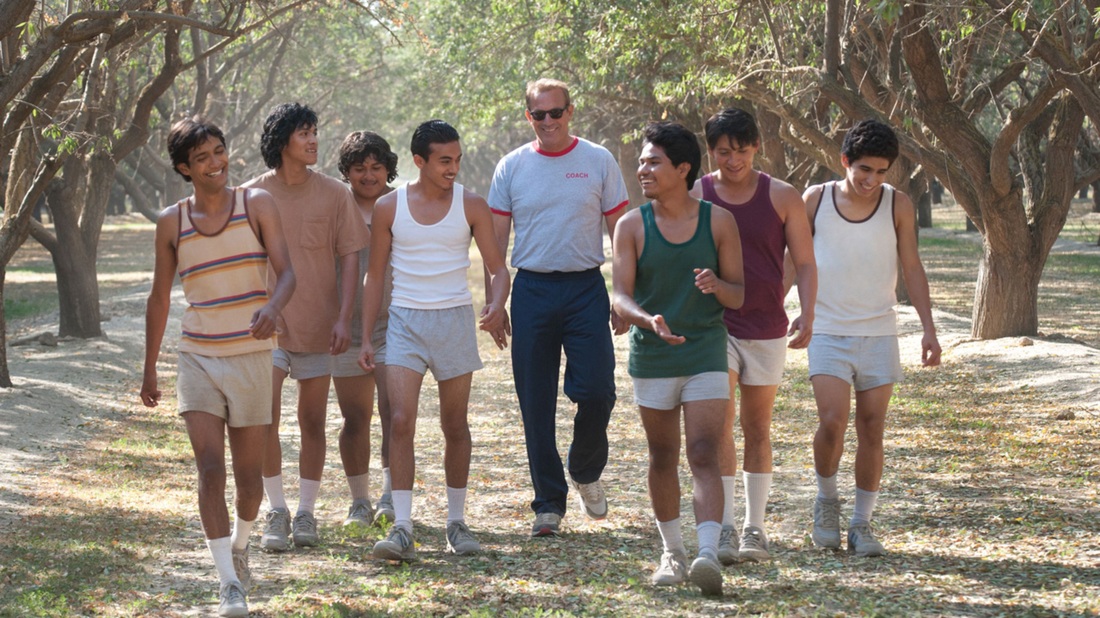|
The release of the movie McFarland, USA has generated quite a bit of criticism due to its perpetuation of the “white savior” myth. Yet again, Hollywood has given us a tale about a white hero who enters a community of color and motivates non-white characters to achieve things beyond their dreams. This white-savior theme finds particularly fertile ground in films about high school. High school is the last moment in the life-course before we send children off to be adults. This is society’s last chance to get the socialization messages right before we potentially lose touch with a generation. Hollywood loves the potential of this moment. We have seen the basic white-savior dynamic in high school films such as Freedom Writers, Dangerous Minds, and Blackboard Jungle. In these films, Erin Gruwell, Louanne Johnson, and Richard Dadier, (played by Hilary Swank, Michelle Phifer, and Glen Ford, respectively) are white teachers who enter the “dangerous jungles” of classrooms filled with mostly non-white students and convince these students to believe in themselves, to make better choices in their lives, and to work hard in school. Hollywood is more than happy to cast popular and bankable white actors to portray characters who rescue non-white characters from lives of poverty and desperation. Such films stir audiences with “feel good” happy endings and serve to cleanse white audiences from the guilt of racism. In McFarland, USA, Kevin Costner is the latest actor to play a white teacher (Jim White, if you can believe it) who saves students of color from their difficult and dreary lives.
Jim White transforms a group of seven poor, rural Mexican-American boys into championship cross-country runners. He also motivates them to attend college, at times against the wishes of their parents who would rather have them earning extra money picking crops in the fields. Along the way, he gains respect for the culture and work ethic of the boys. The white hero is personally transformed as he comes to appreciate the humility, tenacity, and integrity of the residents of McFarland. McFarland, USA tells the tidy Hollywood story of how racial chasms in the United States can be bridged by the efforts of individual heroes, and that the agents of this racially progressive change can be white people.
For instance, let’s take a look at a few other “savior” films in the high school film genre to see if we see similarities between them and McFarland, USA. As I noted, there are white savior teachers rescuing non-white students in Dangerous Minds, Freedom Writers, and Blackboard Jungle. But let us not overlook the Latino-savior Jaime Escalante rescuing low-income Latino math students in Stand and Deliver, the black-savior Mark Thackeray rescuing white working-class students in To Sir, With Love, the black-savior Ken Carter rescuing multi-racial high school basketball players in Coach Carter, the black-savior principal Joe Clark rescuing an entire inner-city school in Lean on Me, and the black teacher Blu Rain who saves a desperately poor and troubled black student in Precious. I do not point out these examples to say that the heroes of films like McFarland, USA, Dangerous Minds, Freedom Writers and Blackboard Jungle are not examples of white saviors. They certainly are. But they are more than that. Our understanding of these films falls short if we limit the analytical categories we use to describe and criticize them. Despite their racial differences, the cinematic heroes Jim White, Erin Gruwell, Louanne Johnson, Mark Thackeray, Richard Dadier, Jaime Escalante, Ken Carter, Blu Rain, and Joe Clark all have something in common. They are all adult members of the middle or upper middle class. They all enter a low-income community as middle-class outsiders. They exercise their middle-class privileges and assumptions as they “save” low income students from a culture of poverty and despair. There are certainly plenty of racial overtones, assumptions, and examples of the white-savior complex in many of these films. But there is much more in these films that we need to understand.  In "Lean on Me," Joe Clark is a middle-class savior In "Lean on Me," Joe Clark is a middle-class savior
To help reveal the class-based assumptions of movies like McFarland, USA it is important to analyze them not only as individual pieces of art, but as part of a larger genre that reveals cultural assumptions about social class, adolescence, and education in the United States. (I analyze 177 films about high school in Hollywood Goes to High School: Cinema, Schools, and American Culture. The updated and revised second edition will be released by Worth Publishers on March 13th, 2015.) When we contrast films like McFarland, USA with films that feature middle-class students we begin to see that social class is an explanatory variable at least as prominent as race. In these middle-class high school films such as The Breakfast Club, Ferris Bueller’s Day Off, and Clueless, the teachers, coaches and principals are never depicted as heroes. In fact, the adult characters become either antagonists or side-show buffoons. In school films about middle-class students it is the students who are invariably the heroes. Middle-class students know how to rescue themselves. Ferris Bueller doesn’t need the help of any adult. He is just fine on his day off. The kids in The Breakfast Club have problems, but they solve them on their own, in spite of adult intervention. Middle-class kids in high school films need no savior -- even when they are flawed, even when they need help, and regardless of their race. It is only poor students who need a savior. The poor students are often black, Latino, or Asian. They are also sometimes white.
The multi-racial poor students in Dangerous Minds, for instance, need Louanne Johnson. They depend upon her. She is, in every real sense, their savior. And she is white. But she is also an adult middle-class outsider with middle-class cultural assumptions about individual responsibility and success. When she tells her students, “You have a choice. It may not be a choice you like, but it’s a choice” she is echoing the sentiments of Coach Ken Carter, a middle-class African-American, when he says to his multi-racial poor basketball players, “Go home and look at your lives tonight. Look at your parents’ lives and ask yourself, ‘Do I want better?’” Jim White knows the odds are stacked against the kids on his cross-country team. But he also admires their work ethic and he has been impressed by how they have responded to his coaching. He tells his team, “There's nothing you can't do with that kind of strength, with that kind of heart." The post-script of the film proudly reveals that all seven team members attended college, most graduated, and they currently have middle-class jobs such as police detective and school teacher. We are even told that several of them are now “landowners.” It is a happy capitalist ending. In Hollywood’s worldview, only poor students need saviors – and the saviors are always adult members of the middle-class. And sometimes they are white. But regardless of their race, the salvation offered is always one that reinforces middle-class cultural assumptions about individualism, hard work, the importance of education, and the possibilities for upward class mobility. Robert C. Bulman Robert C Bulman is a professor of sociology at Saint Mary’s College of California. He received his B.A. in sociology from U.C. Santa Cruz in 1989 and his Ph.D. in sociology from U.C. Berkeley in 1999. He is the author of Hollywood Goes to High School: Cinema, Schools, and American Culture. It was first published in 2005. The second updated and revised edition will be published by Worth Publishers on March 13th, 2015. You can reach him at [email protected]
debbis2792
9/11/2015 08:01:47 am
I don't know if I totally agree with this statement. Im hispanic living in the US and yes I do see some discrimination even today, but sadly Im a white hispanic so the discrimination is not towards me but towards those of my race. I didnt get that "white savior" idea while watching the movie but now that you pointed out it kinda does make sense, the thing is that thats what educators should have as their mantra, making their students allow themselves dream, and aspire for the life they dream to have. Effort, thats all that is needed.
This Movie Is Lame Disney Nonsense
9/25/2015 11:49:27 am
White was a dedicated and compassionate McFarland educator for 17 years before he ever coached at the high school, and it took him another seven years of cultivating running talent as the XC coach before they won their first state title.
Jaime Guzman
1/23/2016 11:58:42 am
I am Latino and I just finished watching the film just about 45mins ago. I thoroughly enjoyed the film but it got me thinking. Are there films where a person considered a minority saves an all white school/white class of students? To Sir, with Love is the only film that I can think of that may fit the savior narrative in films. It is an interesting topic and it has me question the state of American film. Especially since an issue of the Oscars has been so recently brought up. Comments are closed.
|
.
.
Tags
All
|

 RSS Feed
RSS Feed